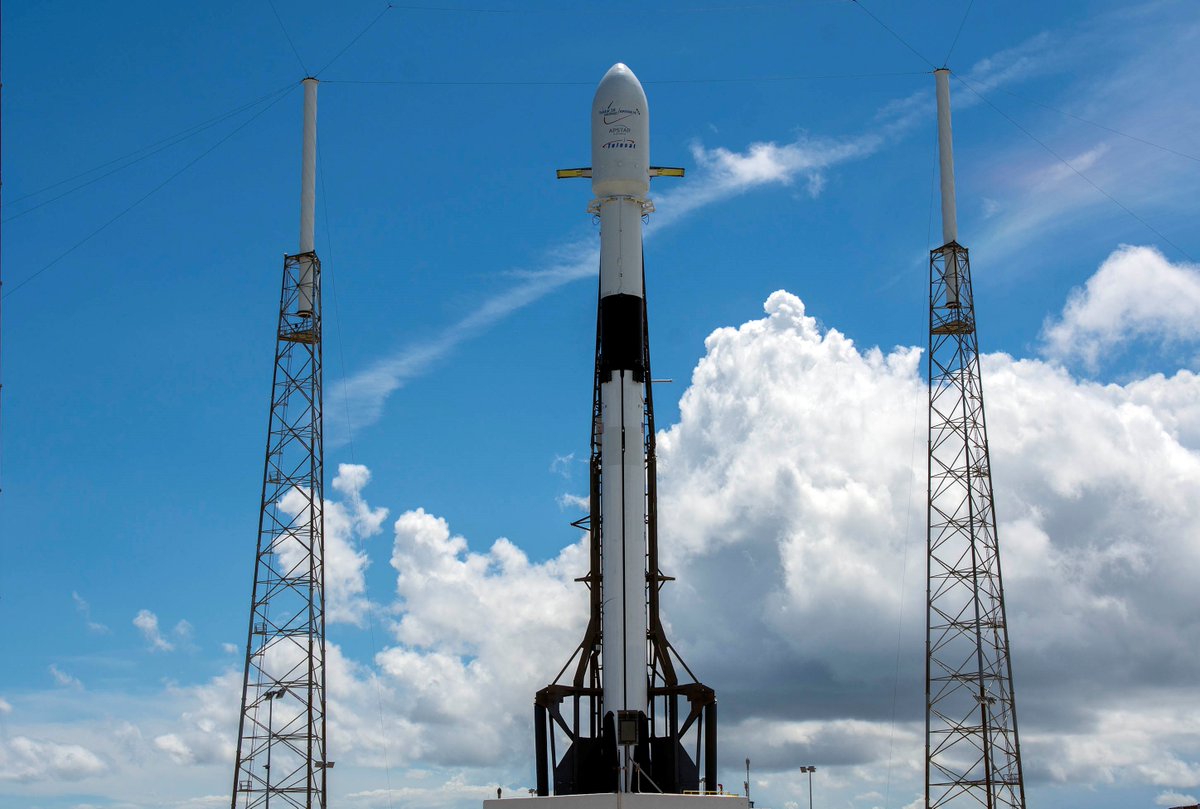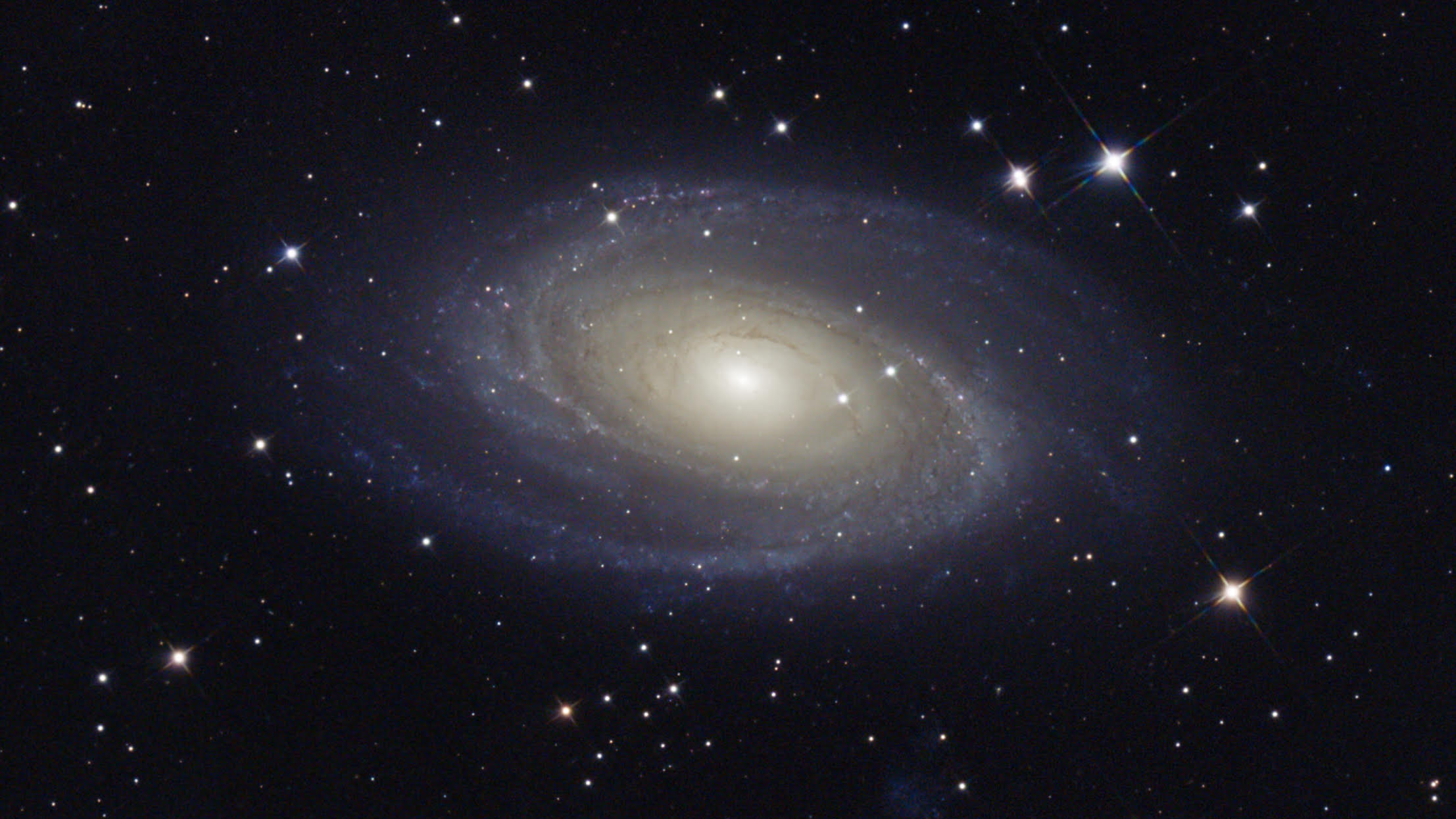Watch SpaceX launch a Falcon 9 rocket packed with Starlink satellites this Star Wars Day
Liftoff is at 3:01 p.m. EDT (1901 GMT).
CAPE CANAVERAL, Fla. — SpaceX is getting in on the Star Wars Day action as it's planning to launch its own Falcon into space this May the Fourth. A veteran Falcon 9 rocket will ferry a full stack of Starlink satellites into space on Tuesday afternoon (May 4) and you can watch it live online.
The Hawthorne, California-based company will launch one of its fleet leaders, a very sooty Falcon 9 rocket dubbed B1049. The frequent flier won't make the Kessel Run, but it will blast off from Pad 39A at NASA's Kennedy Space Center here in Florida at 3:01 p.m. EDT (1901 GMT).
You can watch the launch live here and on the Space.com homepage, courtesy of SpaceX, beginning about 15 minutes before liftoff. You can also watch the launch directly via SpaceX.
And here's a fun SpaceX fact for Star Wars Day: The company's founder and CEO Elon Musk named the its Falcon rocket family after the Millennium Falcon from Star Wars. (Its Dragon spacecraft are named for Puff the Magic Dragon.)
Related: SpaceX's Starlink satellite megaconstellation launches in photos

Join the Space.com forums here to discuss SpaceX and space travel. Let the community know what you're thinking!
Tuesday's flight, called Starlink 25, is the 13th mission so far for SpaceX in 2021. The company has been continuing a rapid launch pace, leaning on its fleet of flight proven rockets. So far every mission this year has flown on a reused booster.
SpaceX created Starlink with an overarching goal to provide high-speed internet access to users around the world. The service is targeted to users in rural or remote areas that have little-to-no connectivity, although anyone can use it.
Get the Space.com Newsletter
Breaking space news, the latest updates on rocket launches, skywatching events and more!
Ever since the first Starlink satellites got off the ground, SpaceX has planned for its initial constellation to be 1,440 satellites strong. The company has surpassed that number with its flights so far.
Now that this first big milestone has been achieved, SpaceX is looking to officially rolling out the service.
Prospective users can pay a small deposit sign up for the service now, via the company’s website. However, it could be a few months before the actual service becomes available.
This launch marks the 117th flight overall for SpaceX's 229-foot-tall (70 meters) Falcon 9 booster. The star of the mission is one of SpaceX's flight leaders: a eight-time veteran Falcon 9 first stage, designated B1049.
This frequent flyer made its debut in 2018, carrying the Telstar 18V satellite into orbit from Cape Canaveral before trekking across the country to launch 10 Iridium NEXT satellites from SpaceX's pad at Vandenberg Air Force Base in California. The launcher then switched to Starlink duty, ferrying six different Starlink payloads so far.
If all goes as planned, approximately nine minutes after liftoff B1049 will touch down on one of SpaceX's two drone ships — "Of Course I Still Love You." If successful, it will mark the 84th recovery of a first stage booster since the company landed its first one in December 2015.
The weather outlook looks good for Wednesday's early morning liftoff, with forecasters at the 45th Weather Squadron predicting a 80% chance of favorable launch conditions. The only issue of concern is potential cumulus clouds and liftoff winds. (There is a backup day if necessary on Thursday and the weather looks just as favorable.) However, officials say that the recovery weather is moderate, which may prove tricky.
SpaceX's main goal is to deliver its payload to space, with booster recovery being an added bonus. Since the company is relying so heavily on its fleet of veteran launchers, they don’t want to take any chances with rough seas at the landing site. If all goes as planned, this booster will be the second to launch and land nine times.
SpaceX will continue its tradition of recovering the Falcon 9's payload fairing, or nose cone, on today's mission, scooping up the fairings after they fall back to Earth in two pieces.
A pink and blue painted boat, named Shelia Bordelon, is SpaceX's current fairing recovery boat. The vessel will use its on board crane to hoist the fairing pieces out of the water after landing.
Follow Amy Thompson on Twitter @astrogingersnap. Follow us on Twitter @Spacedotcom or Facebook.
Join our Space Forums to keep talking space on the latest missions, night sky and more! And if you have a news tip, correction or comment, let us know at: community@space.com.

Amy Thompson is a Florida-based space and science journalist, who joined Space.com as a contributing writer in 2015. She's passionate about all things space and is a huge science and science-fiction geek. Star Wars is her favorite fandom, with that sassy little droid, R2D2 being her favorite. She studied science at the University of Florida, earning a degree in microbiology. Her work has also been published in Newsweek, VICE, Smithsonian, and many more. Now she chases rockets, writing about launches, commercial space, space station science, and everything in between.









